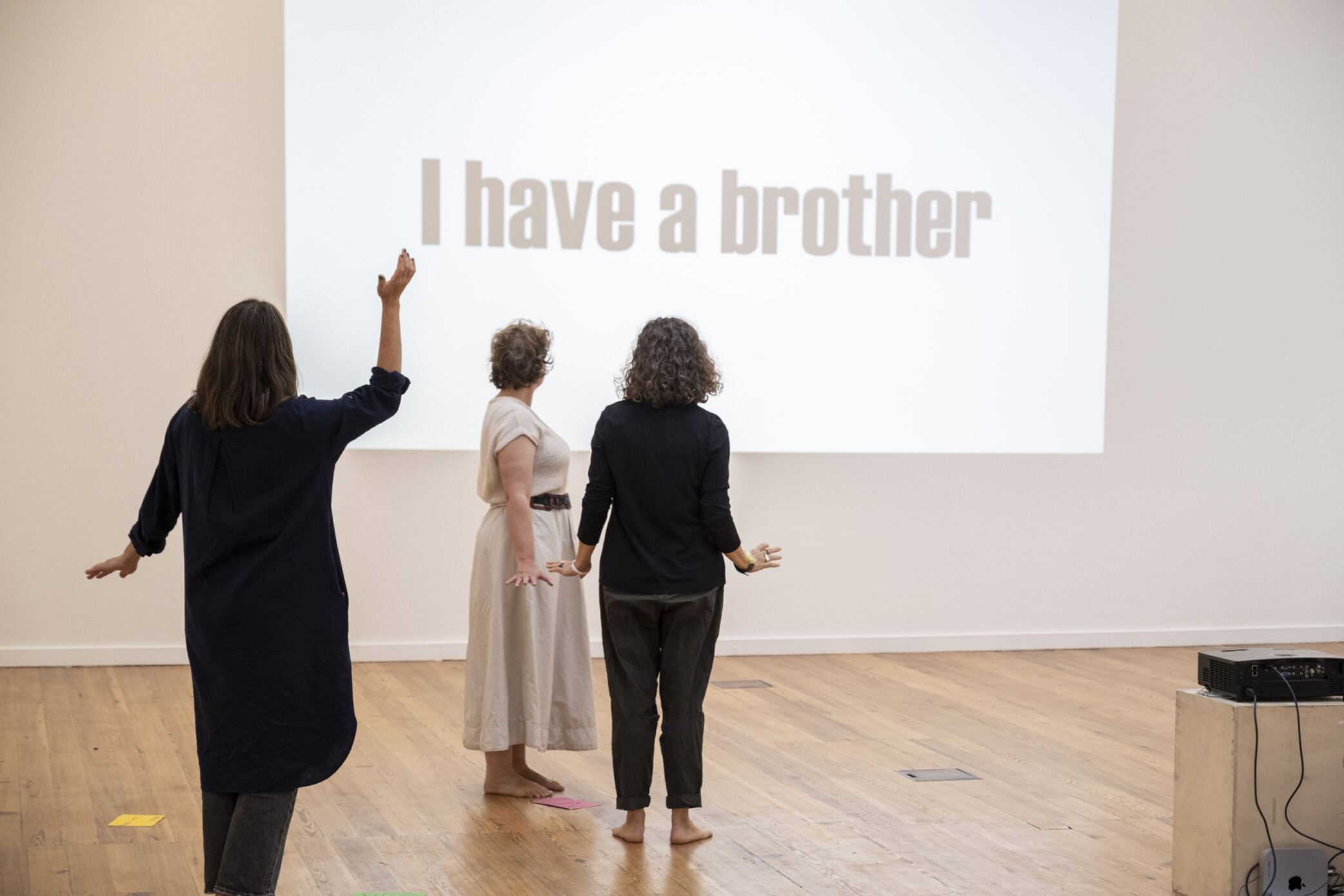Parallax dramaturgies in embodied dialogues
This workshop was developed by Riikka Theresa Innanen and Gudrun Beckmann as part of the final seminar ‘Towards a pedagogy of imaginative dialogues’, August, 2023.

Introduction
In this workshop we investigate how can we benefit from the different points of view in democracy, and of how we both inhabit spaces and create spaces. We raise awareness and sensibility of how space and perspective affect your own experience, thinking and feelings. We create the multiple perspective lines for the parallax, and space and the dramaturges and experiences in it, become tools for curiosity, agency and authenticity. We want to enable a deeper embodied awareness of dynamic dialogues and multiple viewpoints, which we can use as pedagogical tools.
In short
- Introduction (5 minutes)
- Warming up (10 minutes)
- Expresso-bar; the facilitator shows quickly all the four tasks (10 minutes)
- Cycle of experiencing four modalities to share space, dialogue and identity (4 x 10 = 40 minutes)
- Personal reflection (5 minutes)
- Sharing reflections and talk (20 minutes)
Material:
– beamer /screen+ laptop or audio and speakers
– ear plugs for the observers
– coloured paper for reflections
– drawing and writing material
– tape
Set up
Warm-up
- Walking through the space
- Being aware of your own body and the body of the others
- Being aware of distance to the other, proximality
- Playing with distance and proximity
- Playing with rhythm and speed; walking fast
- er and slower, running, slow motion…
- Breathing, looking
The warm-up ends with awareness of how the literal space between each other mutually influences the dialogue, and that we have agency by changing our own placement.
Espresso-bar
Short introduction to the four tasks:
- Yes – No – Maybe/I don’t know; questions arise to which you individually give one of the three answers. The questions are projected on the wall or a screen. Each answer (yes, no, or maybe/ I don’t know) is an agreed gesture or movement or position (e.g. high and low). – Focus: physically observe how the groups you share the answer changes. Allow yourself to be honest, soft, fluid and playful. Allow yourself to notice how we might share similarities with surprising others, even those you might have thought you have nothing in common with.
- The square – in a square, 3 x 3 spots are marked on the floor with a tape (1 – 1,5 meters between each spot).
X X X
X X X
X X X
Two participants start at a different spot in the square. Step by step, someone makes a move: to the next spot: a step forward or to the side, to the back. The other calmly watch – perceive – value- and act (moves to another spot). The first one react etc.. If you play the square with 3 or 4 people, you can step out of the square and someone else has to step in. Focus: become aware of how the other person’s physical change affect you in this embodied dialogue..
- The line; walk on a line together and have a talk, for example on ‘How you came here’. When you walk one way down one person talks, the other listens. Then you go the other way done and the roles change. The one how talks, has the eyes shut; the listener guide the one by hand. Focus: moving and talking together, distance and proximity
- The observers; there are some chairs for the observers. The observer put in the earplugs and observe anything carefully. Try to switch between observing the whole and observing single actions. If you want, you can stand up, zit or lay down.
Cycle of experiencing modalities to share space, dialogue and identity
The group is divided in four subgroups. Each group starts at another ‘station’ of the cycle of experience.
All four tasks are carried out in some space, close to each other. The observers can se everything.
Each groups experience one station for 10 minutes. Then they move to the next station.
Personal reflections
Participant s are asked to try to catch your experience by writing or drawing. They can use coloured paper:
ORANGE – emotional sensation
GREEN – observations of different modalities
WHITE – new thoughts/Aha-moments
OTHER – free
Sharing reflections and talk
The refection’s are put as a mosaic in the middle of the whole group.
Everybody is free to read, ask, talk.
Please answer the following statements by silently doing the gesture and moving to the area of either
Yes
No
Maybe/Not Sure
I like blue
I drank coffee today
I prefer blue to yellow
I used a bike to get here
I am full of energy
I have a brother
I have dropped and broke a mobile phone
My neighbor wears a hijab
My sister wears a hijab
It affects me if women wear a hijab.
Etc..
Photos taken by Janine Veen



